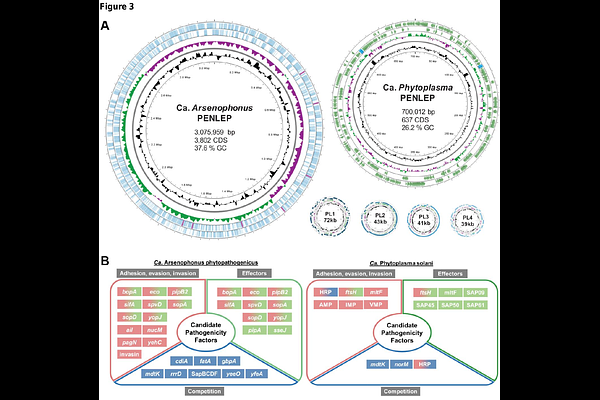A multi-partner symbiotic community inhabits the emerging pest Pentastiridius leporinus

A multi-partner symbiotic community inhabits the emerging pest Pentastiridius leporinus
Vogel, H.; Weiss, B.; Rama, F.; Rinklef, A.; Engl, T.; Kaltenpoth, M.; Vilcinskas, A.
AbstractThe planthopper Pentastiridius leporinus has emerged as a severe crop pest, rapidly expanding both its host plant range and the affected areas in central Europe. Originating as a monophagous herbivore of reed grass, P. leporinus recently adopted polyphagous feeding and is now a pest of sugar beet, potato, carrot, and onion, suggesting rapid ecological niche expansion. P. leporinus vectors two bacterial pathogens, the {gamma}-proteobacterium Candidatus Arsenophonus phytopathogenicus (CAP) and the stolbur phytoplasma Candidatus Phytoplasma solani (CPS), which are responsible for a range of disease syndromes, including syndrome basses richesses (SBR) in sugar beet. We used long-read metagenomic sequencing to characterize the genomes of microbes associated with P. leporinus, resulting in the complete sequences of CAP and CPS, as well as primary symbionts of the genera Purcelliella, Sulcia and Vidania, and facultative symbionts Rickettsia and Wolbachia. The primary symbionts are inferred to provide all ten essential amino acids and contribute to B vitamin biosynthesis. The genomes of CPS and CAP encode numerous pathogenicity factors, enabling the colonization of different hosts. Bacterial fluorescence in situ hybridization revealed the tissue distribution, cellular localization, relative abundance and transmission patterns of these bacteria. The intracellular presence of all primary symbionts in bacteriomes, the intracellular presence of Wolbachia, and the intranuclear localization of Rickettsia, suggest vertical transmission. CPS was restricted to salivary glands, suggesting strict horizontal, plant-mediated transmission, whereas CAP colonized all tissue types, allowing for horizontal and vertical transmission. Our data suggest that P. leporinus hosts an exceptionally broad range of symbionts, encompassing mutualistic, commensal and pathogenic interactions.